
On 30th March, Helen Rennard reached the summit of Ben Nevis to complete a winter round of the 282 Munros, becoming the fifth person - and only the second woman - to do so. In the process she set a new winter record of 80 days, 9.5 hours. We caught up with her to talk sleep deprivation, wound management, and climbing a new grade IX winter route just the day before starting.

Working under the publicity radar, her attempt known only to a few close friends and family, Helen battled injury, sleep deprivation, and complicated logistics throughout a winter of very mixed weather and conditions, putting in some massive hill days - many of them back-to-back. Finishing with the Lochaber Traverse over the Grey Corries, Aonachs, CMD and The Ben (38km, 3250m ascent, 12hrs50), even her final day was far from a pushover.

"Keeping the round quiet was a conscious choice" she tells us.
"I had no obligation to sponsors, and I'm not a regular social media user. I was doing it for me alone, and this helped reduce the pressure to perform. If I'd announced it and then failed, that'd have been bad. And frankly, I didn't want people distracting me with messages all the time, looking for updates - however well-intentioned - because that can get overwhelming [Sorry Helen - Ed]."
In fact so quiet did she keep it that Helen, a highly accomplished Scottish winter climber, chose not even to tell her climbing partners what she was about to attempt when, just the day before her start on 9th January, she joined Dave MacLeod and Calum Muskett on a new grade IX,8 winter route on Beinn an Lochain.
"Seconding Dave on that was pretty hard and sketchy" she says. "It felt an appropriate pre-Munro-start thing to do, and helped get winter climbing out of my system for the season. After the climb I went and slept in my car in Tarbert. Then I missed my alarm and slept in. Starting my first Munro day at 10:30am was pretty late for a January daylight window."
In hindsight perhaps it was a sign of things to come, since many subsequent days started late and finished long after dark: "it's a body clock thing!" says Helen.
Of the very few previous winter Munroists, only Steve Perry (2006) took on the round as a continuous self-powered journey. As with the others - Martin Moran, Kev Woods and Anna Wells - Helen used a vehicle to access the hills, and often for overnight accommodation, allowing her to follow the (comparatively) better weather across the Highlands, and to work through the tick list largely as a series of day trips - albeit enormous efforts in some cases.
While revisions to the Munro list, variations in vehicle use, and vexed definitions of what constitutes winter all make direct comparisons tricky, Helen's sub-81-day time is somewhat faster than the 83 day gauntlet first thrown down by Moran in 1985 (on the then 277 Munros), a time equalled last year by Anna Wells.
"At the start, I was motivated at least in part by the goal of a fastest time" says Helen "but it grinds you down, and as I went on this motivation waned and in all honesty towards the end all I really wanted was to finish and return to normal life!"
Of course the physical demands were considerable, yet it was the cumulative impact of sleep deprivation that proved to be one of her bigger challenges.
"I can honestly say my legs never tired" she says "and I think that's because I'm pretty well conditioned to the hills after years of walking and climbing. But I am someone who needs a minimum eight hours sleep a night to feel fully rested and functional. Having helped out on Kev's winter round I knew lack of sleep would be an issue, and it really was! There were many days when I hit a wall and felt super drained, not so much physically but mentally from having too little sleep for so many nights in a row."
Using a car allowed her to return home to Lochaber for more than half of the nights, to rest well, dry out kit and eat.
The round has changed my perspective of what I can manage by myself in the mountains. I love the Scottish hills deeply and feel very lucky to have had such an intense experience in them. The memories will last forever

Having batch-cooked and frozen a variety of meals in advance, she could refuel properly at home - and she really needed to, with a daily intake of around 5-6000 calories. Despite this she lost 1 stone over the journey, and says she's become notably thin and ripped - except, naturally, for her legs, which have gained muscle mass.
"The 6000-calorie winter Munro diet should be a weight loss programme" she jokes.
For hills further from home Helen often slept in her vehicle, totalling 21 nights of car camping.
"My car is well set up for being a base actually" she says. "Once down off the hills I'd hang stuff from the seats, lay out my wet gloves and footwear on the dashboard, turn the heater up full and try to blast everything dry. It got pretty steamy at times. But with a mattress in the back I was surprisingly comfy and did sleep well. The problem was that there was rarely enough of it, since I was so often down late evening and needing to be up and away again sharp the next moring."
Among her bigger days were the Fisherfield Five (48km, 3243m, 13:39); the Monar Six (47km, 3953m, 12:14) and two days on the Rigby Round (66km, 3983m, 16:36 on day 1; and a mere 55km, 3014m, 16:02 for day 2). On the latter, a classic hill runner's route over 18 Cairngorm Munros, she was joined by running legend Nicky Spinks.
"Nicky was great" says Helen "she handled all the route planning on the Rigby Round, which otherwise I'd been doing for myself all the rest of the time, and that really helped. But we had a horrible bivvy mid-way with only three hours sleep. Nicky went into that fresh but I was sleep deprived already, and she said she really noticed how it was slowing me down. I was stopping to eat and drink, for instance, when for efficiency I'd usually want to snack on the go.
"I'm not a fast runner on the hills and usually opt for a steady and efficient walking stride and minimal rests or faff, a pace you can keep up all day. But towards the end of the Rigby Round I was seriously flagging.
"After that, Nicky drove us home; and I slept until 2pm the next day."

Harder still was the Mullardoch Round (62km, 5142m, 17:36), an infamous hill challenge in wild terrain at the best of times, and doubly so for a solo traveller in winter:
"On that one I got back to the car at 11pm" she recalls.
"I was too exhausted to drive anywhere so I just slept in the car by the dam. I'd got soaked through near the end and I was so tired that I peeled my layers off and left it all on the ground outside. In the morning everything had frozen solid, my socks sticking up at funny angles. I had a lie in, then headed to Drumnadrochit for cake - no hills that day, just driving to get myself in position for tomorrow."
To benefit from the extra daylight, and an anticipated buildup of fitness, she'd saved many of the more epic routes for later in the round. However that proved a mixed blessing.
"On the one hand that worked" she says "but it was a mistake in a way too. When planning the attempt I'd been unrealistic about what it takes to do all these huge days one after another. In the event it was partly a major physical challenge, obviously, but it turned out to be a logistical headache too. You get down from a hill, probably in the dark and maybe wet; then you've got to eat, sleep, dry stuff out, and drive round to the start of your next day. That all takes way more time and effort than I'd appreciated at the start. There just aren't enough hours in the night for sleep."
Helen was largely self-supported throughout the round, responsible not only for all decisions on the hill but for feeding and transporting herself.
"Sometimes friends joined me for a day" she says "but they were always happy to do so on my agenda. They'd just be there giving me company and some moral support - and that was great. And when people did help out it was really so appreciated - Dave MacLeod driving me into the middle of nowhere early in the morning; or Simon Yearsley and Neil Silver taking turns to act as my safety backup - I'd text them my daily plans and progress updates, so at least someone on the outside knew roughly where I was."
As an additional safety measure Helen routinely carried a PLB, bivvy bag and spare power bank for her phone, along with keeping a different compass in the pocket of both her regular jackets so there'd always be one immediately to hand.
"I know the Munros quite well, having done a previous (multi-decade) round, and from years of general hillwalking and climbing. I found that helped a lot with route planning, knowing my options, and what to expect in terms of places I wouldn't want to be after dark or in wild weather. I'm also comfortable on my own."
But still there were times when the underlying anxiety that quietly accompanied her solo mission would bubble up.
"I found it particularly happened around dusk, when I was still out on the hills far from the finish. As it's getting dark you feel very alone - it's like your subconscious telling you that you shouldn't be there, it's a hazardous place. Doing this again and again, the cumulative stress is very emotionally draining."
While the first couple of weeks had felt novel and fresh, by week three Helen began to notice the growing psychological toll.
"There'd been a big dump of snow after Storm Eowyn" she recalls.
"Smaller roads were a pain to drive, and I was down in the hills around Killin making slow progress. In the Glen Lochay Munros it was deep snow with a hard crust, really taxing to walk in. My borrowed snowshoes broke, so I ended up carrying them and post-holing alone for 13 hours, much of it in the dark. It was a low point. After that I took Simon's advice and started inviting friends to join me now and then, and that little bit of company and added safety margin made a huge difference to how I was feeling."
However it was during a solo day on 16th February that she had an accident that came close to finishing the attempt when, up on the ridge between Mullach Fraoch-choire and A' Chralaig, she tripped and landed on a sharp rock.
"I lay there in agony for a minute, thinking - this is serious" she says.
"Then I took a look. There was a deep hole in my shin, about the size of a 10p coin, with white tissue of some kind showing through. Lots and lots of blood. I wrapped a bandage and buff around it to stem things as best I could, and looked at the map. Five kilometres or so back to the glen - and I could walk, so I got on with it.
"I drove home to Lochaber, and then peeled blood-soaked leggings off to have a proper look. It was not a pretty sight. Still I was knackered, so I went to bed. And in the morning I woke to sheets soaked through to the mattress. That snapped me out of it, and I finally took myself off to A&E at the Belford, where of course the nurse scolded me for not coming in right away. Three stitches, and she said I should be OK to go back out there."

Her fall had happened on a Sunday, and by Tuesday it was too agonising to walk. Assured by a GP friend that it wasn't broken, and that the best thing would be to strap it up and keep moving, Helen fought through the pain to get back onto the hills on the Wednesday, well dosed on regular painkillers. After 10 days the stitches were removed, but thanks - she thinks - to the physical demands she continued to exert on her body, the wound had barely healed. It continued to niggle and suppurate for weeks, and only since her completion of the round has Helen's injury finally begun to properly heal.
"The afternoon after my stitches came out I went to traverse Aonach Eagach. It was soft, wet snow - not nice or easy going. I kept thinking to myself don't have an accident here and end up back at the Belford for another telling off!"
Conditions on the ground were a mixed bag throughout, over a winter characterised by short cold snaps, only occasional snow dumps, and some radical thaws that tended to strip wintry conditions back to bare grass and rock.
"Avalanche risk was often negligible, and the snowless days were good for speedy progress, even when the hills were covered in sheet ice on occasion" says Helen. "While in some respects I would feel a bit relieved when conditions weren't so wintry and challenging underfoot, I have to admit I did find it disappointing too. The dream of my journey had been all about being in the mountains in snow, at their most beautiful. Yes we did have decent snowy days, and even some sunshine. But there's a sadness to all the green hills: is this what our winters are reduced to these days?"
"In these terms my journey really wasn't comparable to the heavy and frozen conditions Martin Moran encountered on the first winter Munro round back in the nineteen eighties."
Yet for all the variability of weather and conditions in any given year, winter Munro rounds are still a rarity, and could never be considered easy.
"Reflecting on the experience a week on, I can't quite believe that I managed to keep it together for 80 days, with the multiple challenges that I faced during that time" concludes Helen.
"I'm proud of myself for having made all of the decisions regarding where to go each day by myself; for keeping myself safe in the Scottish mountains in winter in all weather conditions; and for coping mentally in tough situations.
"The round has changed my perspective of what I can manage by myself in the mountains. I love the Scottish hills deeply and feel very lucky to have had such an intense experience in them. The memories from this round will last forever."
- REVIEW: Rab Nitron 25L Pack 22 Aug
- INTERVIEW: James Gibson on the Martin Moran Round Record 18 Aug
- REVIEW: Montane Terra and Jetstream Shorts 5 Aug
- REVIEW: Rab Downpour Trail Lite and Phantom - ultralight shells for runners and backpackers 29 Jul
- REVIEW: Upland by Ian Crofton 30 Jun
- REVIEW: Rab Trail Tee 23 Jun
- REVIEW: Lorpen T3 Trail Running Eco Socks 10 Jun
- REVIEW: Sea to Summit Airlite Towel 30 May
- REVIEW: Primus Ulti Stove System - Finally, a rival to the Reactor? 12 May
- REVIEW: Black Diamond Pursuit Carbon Z Poles 29 Apr

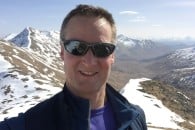
















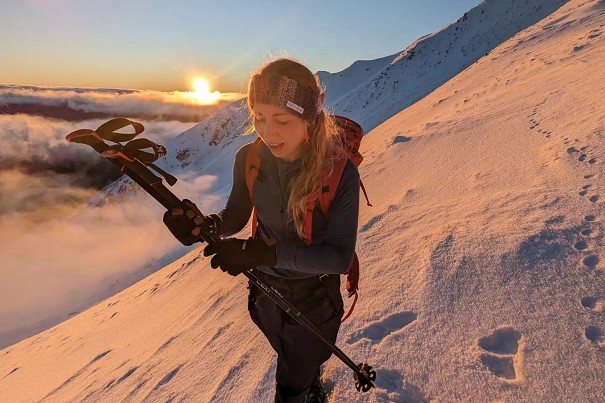
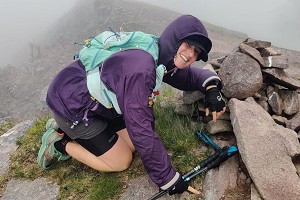
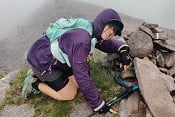
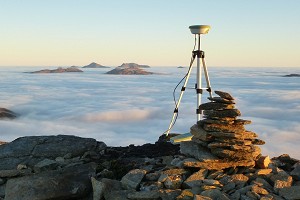
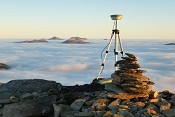
Comments
Truly amazing Helen has done it with its majority part self-supported, while keeping an extremely low profile. Scotland is pretty big after all and driving back to a single place (her home) usually takes hours, whereever coming back from, and takes a similar amount of time to get to the bottom of another hill. No wonder her sleep was deprived. Hats off to Helen!!
Fantastic!
Great stuff. Well done Helen, that's an absolutely amazing achievement.
Averaging 3.5 munros a day plus logistics for almost 3 months takes some serious motivation
Truly humbling. I'm never going to moan about being tired in the hills again. Awesome achievement.